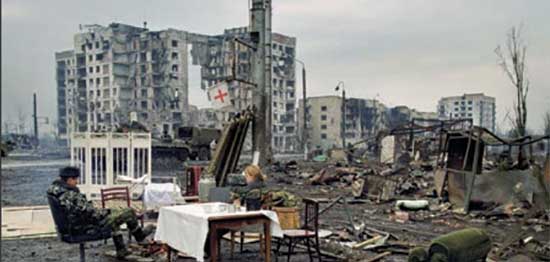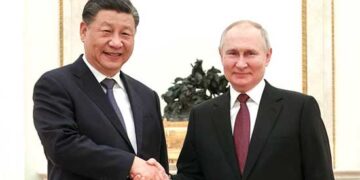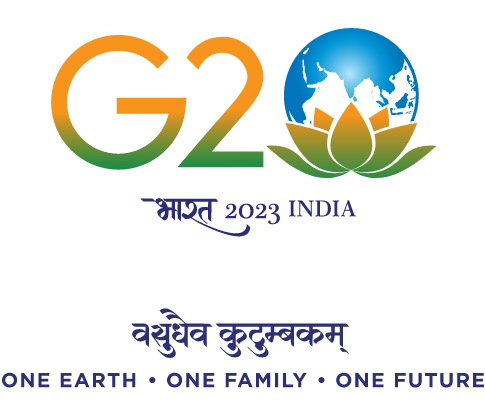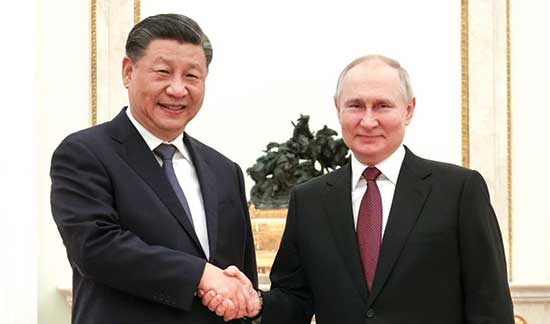 UKRAINE has become a European war with Asian consequences. The West, led by America, is driven by two objectives in its support for Ukraine. The first is incontrovertible.
UKRAINE has become a European war with Asian consequences. The West, led by America, is driven by two objectives in its support for Ukraine. The first is incontrovertible.
A nation state is the new building block of global stability, and any violent transgression of borders can trigger a domino effect as it legitimises unilateral expansionism. The remedy lies in prevention.
The second objective is inspired by the NATO impulse: to weaken Russia in Europe. This is strategic fallacy. You cannot weaken Russia where it is not strong.
Russia lost Europe with the Soviet collapse in 1991. Since then, its muscular atrophy along the advancing NATO frontier has become pronounced. The Kremlin is now in the paradoxical position of being a nuclear superpower without being a regional power. Russia can still destroy the world in five minutes. Ukraine, not quite so quickly!
Russia can be weakened where it is still strong: in Russian Asia. Eight of its 10 time zones and 77 per cent of its territory are in Asia, traversing some 5,000 km eastwards from the Urals and Caucasus to the Bering Strait and the Pacific Ocean.
Caucasus in tight grip
Despite more than a decade of continual war since 1994, Moscow holds the Muslim North Caucasus in a tight grip. In Central Asia it has re-established degrees of influence through patient diplomacy and variable military presence. In Siberia and Outer Manchuria, it exercises sovereignty through rights embedded in Tsarist colonialism. Vladimir Lenin killed the Romanovs in 1918 after the Bolshevik Revolution, but kept their empire.

Vladimir Putin, appointed Prime Minister in 1999, began to pick up the pieces of a shattered decade, saving what he could from the Soviet debris while searching for a defensive line against NATO’s relentless and ruthless advance. The NATO adjectives are not pejorative. Powers which become sentimental do not remain powerful. Stalin was hardly overwhelmed by tears when he pushed the Soviet perimeter into half of Germany after 1945.
Putin, perhaps lulled by the smooth acquisition of Crimea in 2014, misread the mood during his second invasion of Ukraine in February 2022. His mistake was overestimation of Russia’s military prowess. This is clearly not Stalin’s Red Army. Russia will in all likelihood hold on to a slice of eastern Ukraine when the firing ceases, but the reputation of the Russian Army has been dented. Invincible, it is not. The neighbourhood is doing the math.
Vulnerable regions
Russia is growing vulnerable in three of its Asian regions: in the North Caucasus, where there is always the possibility of renewed conflict; in Central Asia, but with less dramatic consequences; and in its far east, across the vast Siberian steppes spread over 13.1 million sq km, or one-tenth of the earth’s territory, but home to only one-fifth of Russia’s population, or some 37 million people at the last count.
The Caucasus range running south of Ukraine and east of Türkiye is considered the traditional boundary between Europe and Asia. The Caucasus states, a network of ethnic identities, are wedged between the Black and Caspian Seas. In 1991, three of them, Georgia, Armenia and Azerbaijan, swept to independence on the tide of change that changed the map of Europe and Asia. But this tide stopped short of the North Caucasus. Moscow denied Chechnya, Dagestan and Ingushetia independence. When their people elected the nationalist Major General Dzhokhar Dudayev as President of the Chechen-Ingush Republic in October 1991, President Boris Yeltsin sent troops to “re-establish order”.
First war of resistance
The Muslim Caucasus has fought long and hard for freedom since the Tsarist advance two centuries ago. The first War of Caucasian Resistance, called a jihad by Muslims, lasted from 1817 to 1864. In 1832, the iconic Shaykh Shamil (1797-1871), third Imam of the Dagestan Imamate, took over leadership of the jihad.
The memory of this legendary guerrilla commander lives on in lore. The Russians conquered Dagestan and Chechnya only in 1859, but fighting continued until Imam Shamil was captured. St Petersburg treated him well, giving him a palatial residence in, ironically, Kyiv. Two of Shamil’s sons joined the Tsar; two others served in the Ottoman Army. In 1869, he was given permission to go on hajj, and died in Medina after completing the pilgrimage. He was buried in the garden of Paradise.
When, in less than 50 years, the Tsars were overthrown, Imam Shamil’s grandson Said became one of the founders of the Mountainous Republic of Northern Caucasus. Freedom lasted a brief three years. In 1920 Moscow was back, this time waving a red flag. Forced into exile, Said Shamil set up the Committee for Independence in 1924.
















